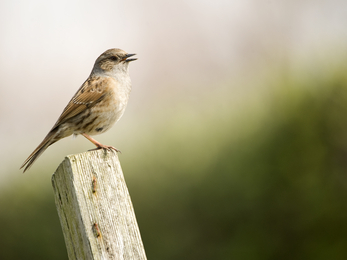John Hawkins / Great tit with caterpillar
Day 1: Garden Birds
Welcome to day 1
Today we're going to learn about three of the fascinating birds you might spot in Dorset gardens and green spaces this spring. You'll find out how to identify the bird by sight and sound, as well as understanding more about what makes these birds tick.
Chaffinch
Fringilla coelebs
Statistics
Length: 14-16cm
Wingspan: 26cm
Weight: 24g
Average Lifespan: 3 years
How to identify
The male chaffinch is one of the most colourful garden birds with a blue-grey crown, brown back and pink breast. Females are brown, but are less streaky than female house sparrows, and have white shoulder patches and wingbars.
Did you know?
The chaffinch is also known as the 'bachelor finch': the males spend the winter near to their breeding territories, while the females migrate further south.
Great Tit
Parus major
Statistics
Length: 14cm
Wingspan: 24cm
Weight: 18g
Average lifespan: 3 years
How to identify
The great tit is a familiar garden bird with a black head, white cheeks, green back, yellow belly and black stripe down its breast. Some say its shrill song sounds just like a bicycle pump being used!
Did you know?
Male great tits have a broad black stripe on the belly, whereas females have a much thinner black stripe. The stripe on the male is an indicator of status and whether the male will be a good choice as a father. The wider the stripe, the more attractive the male is to females.
Dunnock
Prunella modularis
Statistics
Length: 14cm
Wingspan: 20cm
Weight: 21g
Average lifespan: 2 years
How to identify
The dunnock is a streaky brown-and-grey bird, with a dark grey head and a thin bill. On the ground, it moves with a shuffling motion.
Did you know?
The dunnock is also known as the 'hedge sparrow' even though it's not actually a sparrow, but a member of a small family of birds called accentors.










